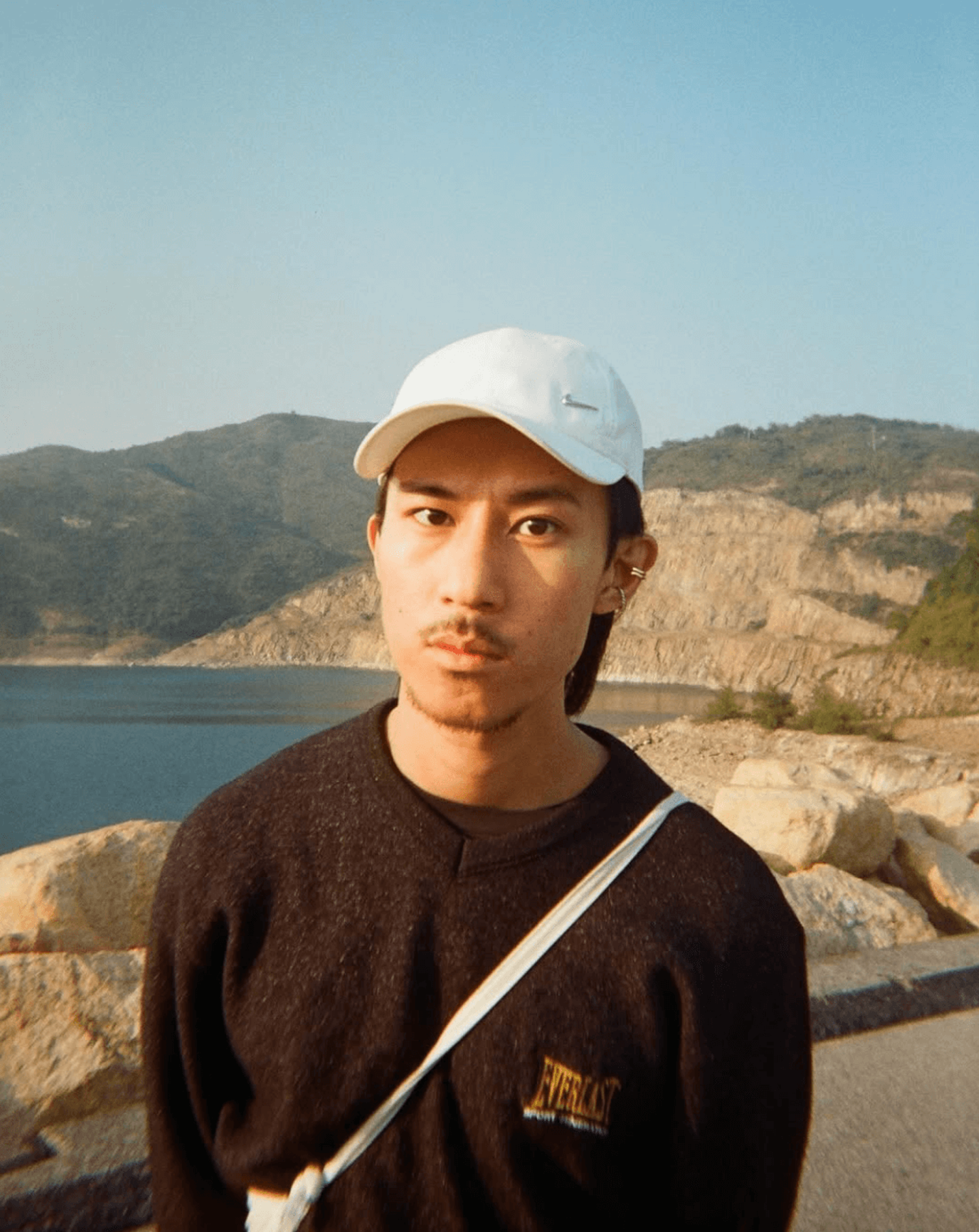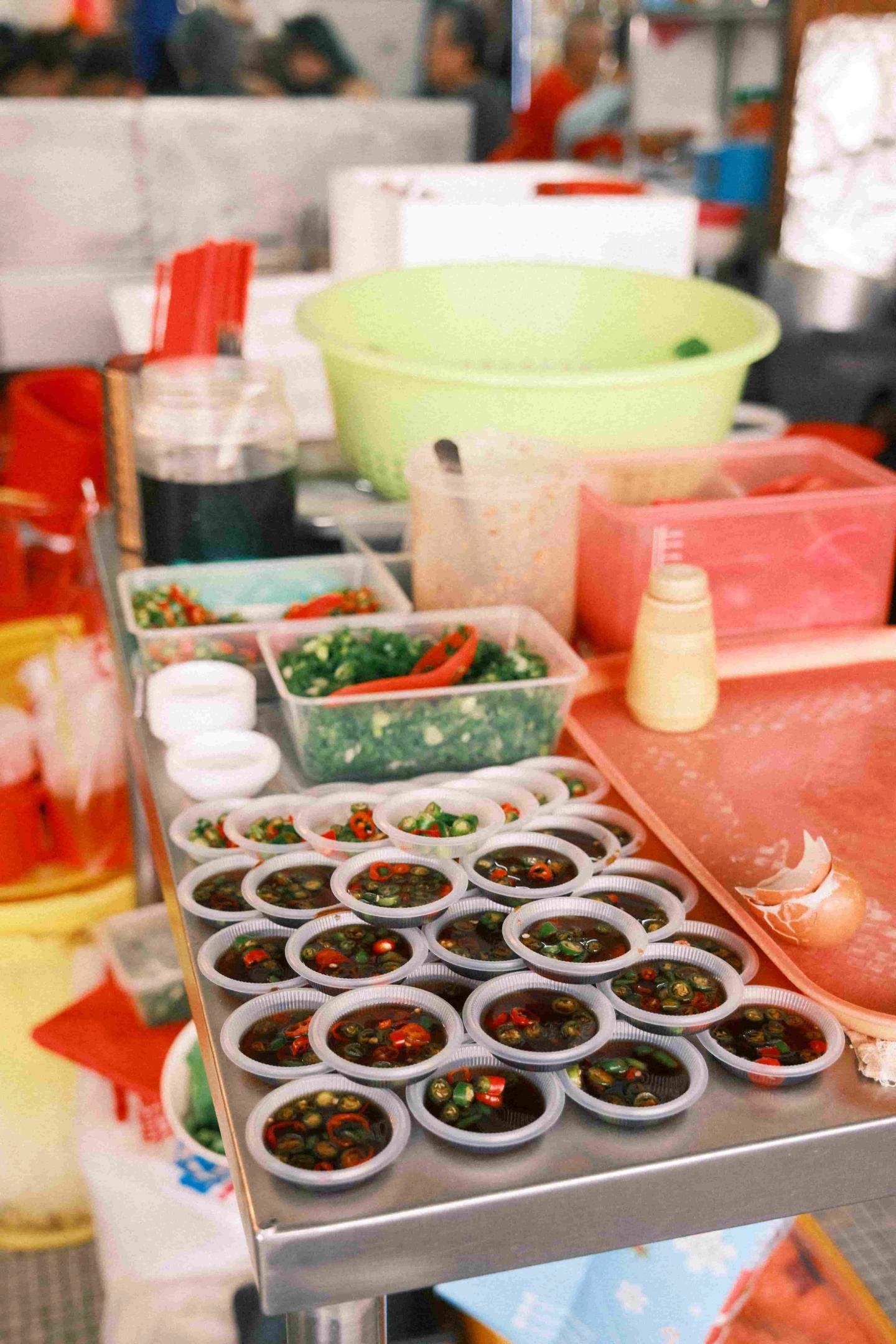

I was wearing a white tank top and a faux pearl necklace when I had my first spoonful of the hot broth. It was thirty degrees out there, yet this hot breakfast somehow made the place even more of a paradise.
I was sitting on the corner of the street with cars parked all around. Above me, a clear blue sky was studded with an occasional piece of cloud. In front of me was a fragrant bowl of Penang Hokkien prawn mee - rice vermicelli and chicken strips in a red shrimpy, spicy and sweet soup, made with pork fat, shallots and gula melaka (palm sugar). It didn’t taste oily at all. It was perfectly balanced with the sambal sauce, as I prefer it hot and spicy, and I finished the whole bowl with great satisfaction.
Everything around me was made from durable plastic. A round white table, red stackable stools, an olive green bowl and spoon, and black chopsticks. There was a cup of hot barley drink, as well as some Teh (milk tea), Kopi Kosong (black coffee), fried keuh teow (flat rice noodles) with clam meat, kaya toast, and soft-boiled eggs.
“That man at the next table is so hot,” I whispered to our friend Shane while breaking up the kaya toast. The butter almost leaked.
He discretely turned to take a look before dripping soy sauce and white pepper to his soft-boiled eggs. After a few stirs, the egg became a pond of white and yellow pearls floating. The dish is so good it could be served as a starter in fine dining if it weren’t for the plastic bowl.
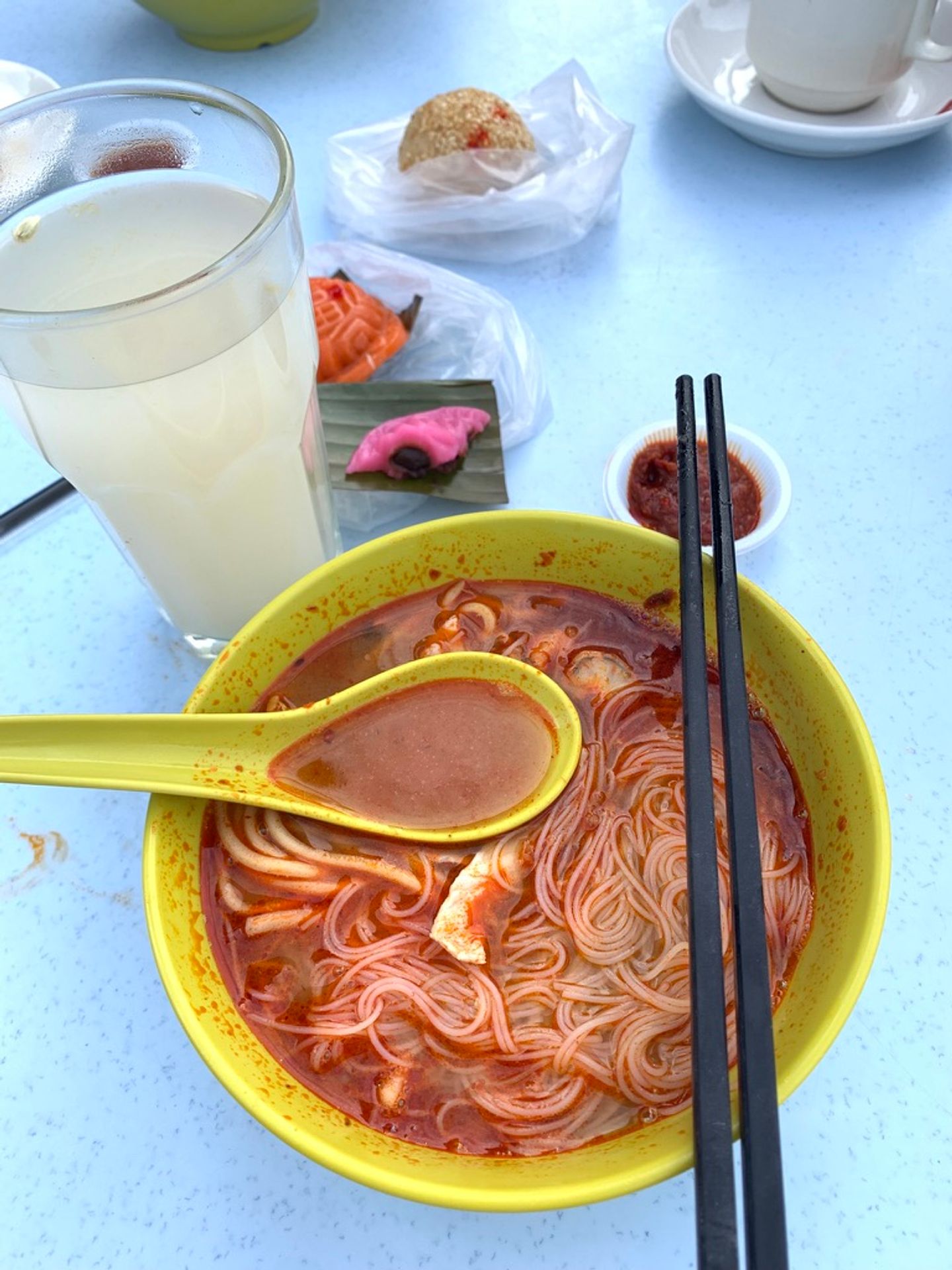
“I think I now know your type.”
“Really?” I dipped the kaya toast into the egg and put it in my mouth. It was heavenly.
“Yeah. I caught you checking out the server who made us Teh at yesterday's breakfast.”
It was another kopitiam (coffee shop). Above me was a row of tubed lighting interspersed with spinning ceiling fans. Their combination cast shadows of the spinning fan on the people, food and table. Everything seemed a bit unreal, like we’d fallen into a time machine. If it weren’t for the men and women working quickly in tightly packed kitchens preparing bowls of noodles or chopped chilli, I’d have believed it was a dream.
“What do you want to drink?” The server came over and asked in Malay. He was tanned with strong eyebrows and a buzz cut. Shane ordered for the three of us quickly, knowing what my husband and I would like to drink.
“It’s always a guessing game. Everyone’s speaking different languages and you have ‘switch channels’ very quickly,” he said in English.
I walked over to one of the stalls with a big glowing board on top announcing Chicken Ho Fun (flat rice noodle) in Chinese. I ordered one in Cantonese, my mother tongue. The chicken bone broth enriched by the shrimp paste supplied an umami flavour, complemented by the barbecue scent from the siu laap which the chef had thrown into the pot to deepen the taste profile.
We explained to Shane how this reminded us fondly of our childhood in Hong Kong. The tiled walls decorated with posters of these dishes; the red altar on the side worshipping Tudigong (Lord of the Land); and foldable wooden tables with metal legs and round plastic stools all felt like home. The plastic tableware came in all kinds of colours, each indicating which one of the food stalls in this hall it belonged to. It was bustling and chaotic in the very best way, with uncles and aunties delivering noodles in hot soups to tables just by recognising their customers’ faces.
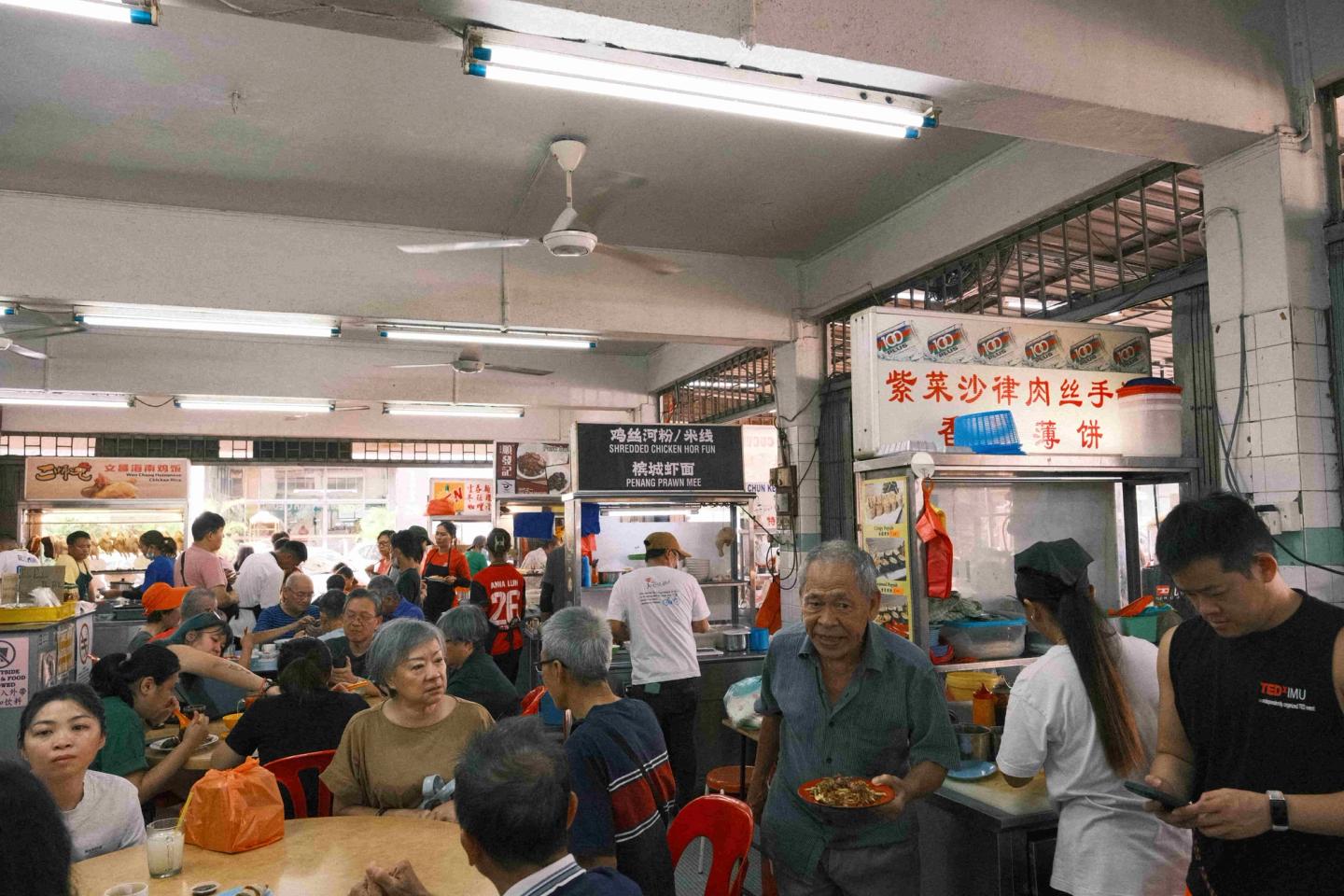
Ghost, my husband, was having the dried version of Hokkien Mee, where the round yellow noodles are fried in dark soy sauce. Visually similar to a Cantonese chow mien, this dish served on the streets of Petaling Jaya has a garlic base, with its fishy taste coming from the oyster sauce. I suspected the sweetness came from the Thai soy sauce I saw the lady use to marinade the meat. Ghost enjoyed it so much that he almost inhaled it in one go.
My sight told me I was home, but my ears and taste buds said differently.
My Teh C ais arrived - an iced tea with the milk replaced by Carnation evaporated milk. In Hong Kong, we called this 茶走, “tea replaced”. It has been my favourite drink ever since I was very young. I looked at the man and said. “Terima kasih”, thank you. He nodded and left, probably noticing that I was a tourist from my look and accent.
The teh still had the frothing head it gets from the vendors pulling action when pouring the tea back and forth between two containers. It was sweetened intensely, and I swore to myself that this would be my last cold drink in Malaysia before I completely destroyed my throat with deliciously sugary drinks.
Shane glanced at the server, then my husband - the latter fair-skinned, soft facial features, mid-length hair. Drastically different looking. Ghost was saying “you know what people say: who you date and who you end up with are two types of people.” Shane laughed hard.
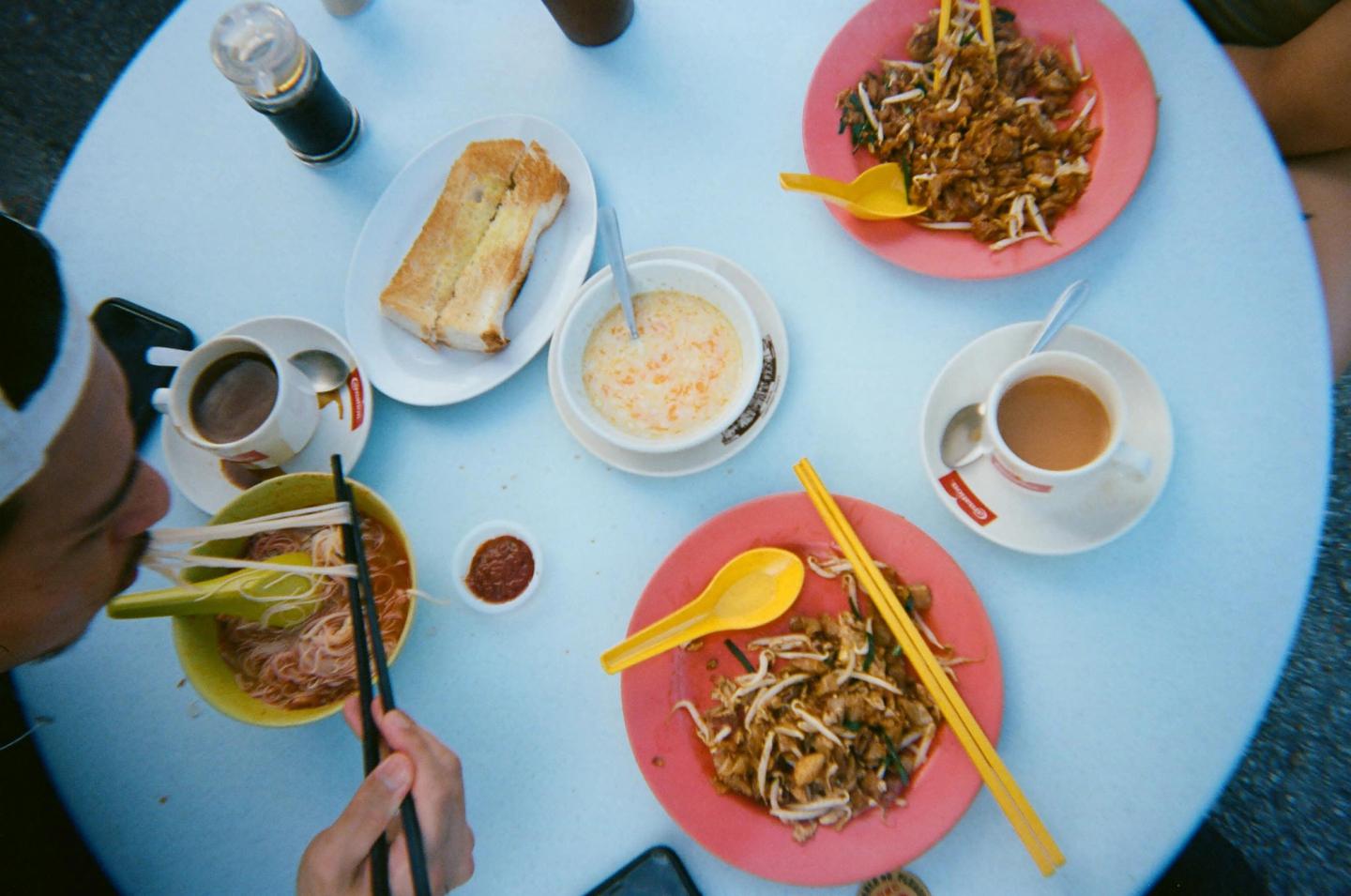
—
That evening, my friends Vinna and Chris, their parents, Shane, Ghost and I dined at a big restaurant housed at the bottom of a 3-story industrial building hidden down an alley. The Malaysian-Chinese uncle who told us about it said it was a local spot only known by the neighbours. However, this didn’t seem to have stopped people from discovering and packing it out. Here, too, the ceiling was lined with rows and rows of light tubes and big spinning fans, which only intensified as darkness set in outside. It felt like we were eating in a time capsule.
When I was young, my parents would bring me to these seafood restaurants in an indoor-outdoor setting to celebrate special occasions. It always felt both hot and windy sitting under the giant fans. Brothers and sisters of the same surname gathered around big round tables. Benefitting from growing up in a coastal city with a rich fishing history, we would have gorgeous dishes like steamed grouper fish with ginger, steamed abalone with sun-dried orange peels, sea sail cooked in wine and chilli oil, giant shrimps in ketchup, steamed scallop with garlic and glass noodle…
At this not-so-secret dinner location, I listened to uncle and auntie talk about how their grandparents moved from Hong Kong and other South-eastern Chinese regions during the early 1900s. Staring at the fish steamed with soy chilli sauce and deep-fried squid with salty egg yolk in front of me, I felt like I was twelve again. I had found my childhood home in a place I had never been before.
On our last evening in Kaula Lumpur, Shane drove us to another place with giant fans and light tubes. By now, Ghost was feeling a bit dizzy with the flickering lights. I had the best nasi lamak with sambal tumis sotong (squid) I’ve ever had. The basmati rice served on pandan leaves was infused with rich coconut milk. Squid stewed in sweet tamarind juice and a strong punch of belacan shrimp paste. Again, Shane ordered for us in fluent Malay.
I stared at Shane and Ghost, chatting about prices of food in different cities, stories of lovers and boys, migrating across continents, learning new languages, and the indecision to settle in one place. I reached to hold both of their hands and said. “This is heavenly.”
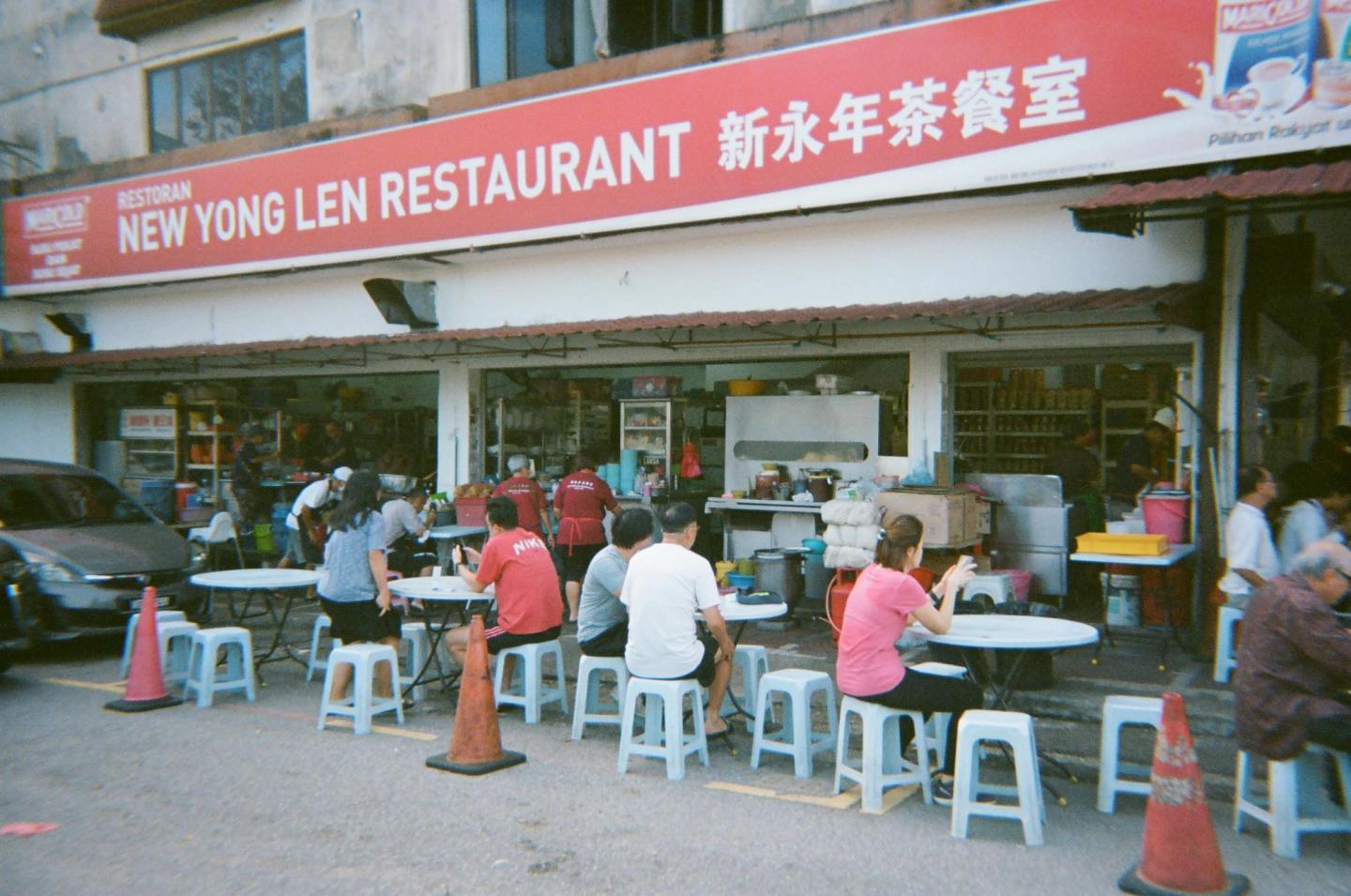
“Both Kuala Lumpur and you are to fall for.” I wrote on the card I left Shane.
On reflection, Ghost said his favourite dish was Ipoh mixed fish patty, stuffed in tofu and various vegetables like lady finger, eggplant, bitter gourd and more. We’d had it at a spot Vinna had taken us to, serving authentic food from her hometown. He said it was his favourite because most of the dishes in Kuala Lumpur were too spicy, and that meal had offered a good break. I laughed so hard.
__
This article is a contribution from one of the participants of The Gramounce Food & Art Alternative MA 2024-25. Their writing is inspired by one of our seminars, or responds to a similar field of interest within food & art.
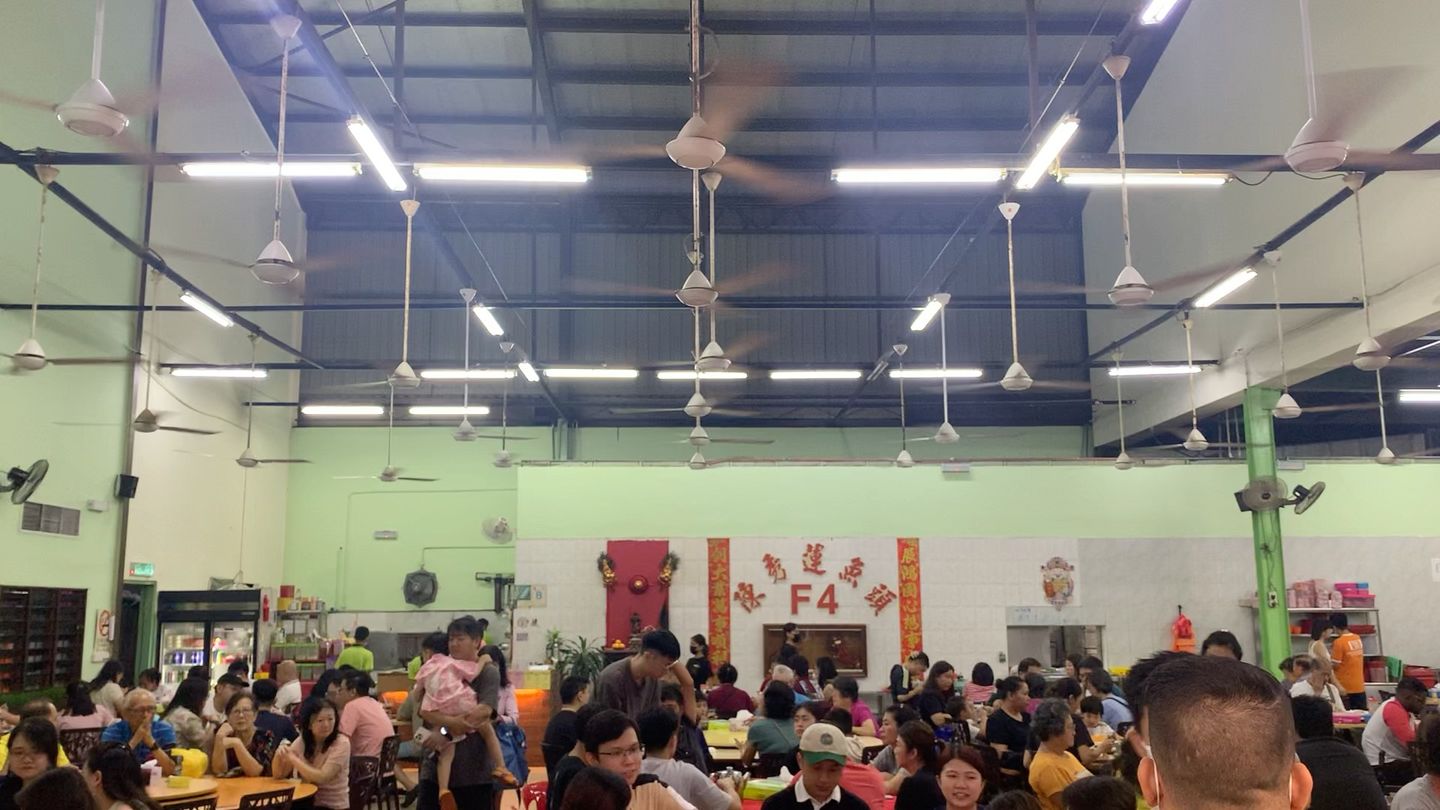
Windmovesmountain writes about food, plants, queer love and everyday magic - observing these endless possibilities and soaking up simple joy as systems collapse around us in this troubled world. (@windmovesmountain)
